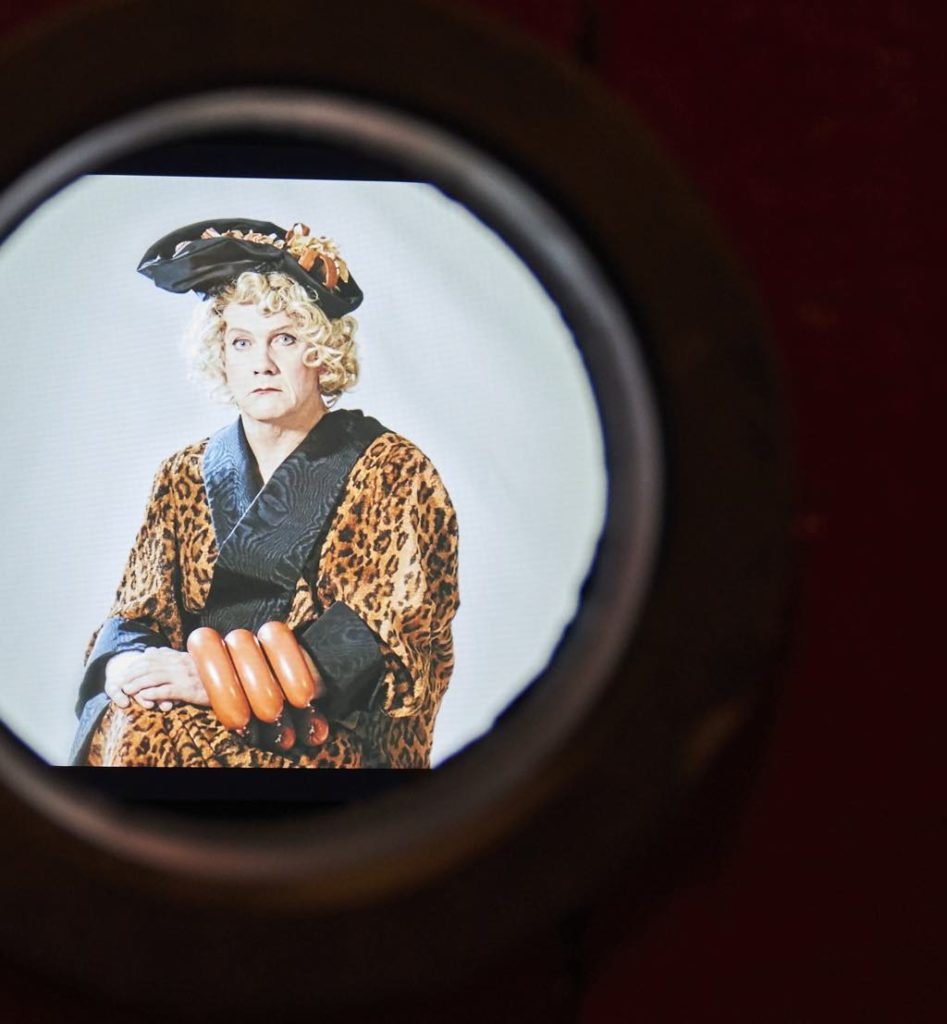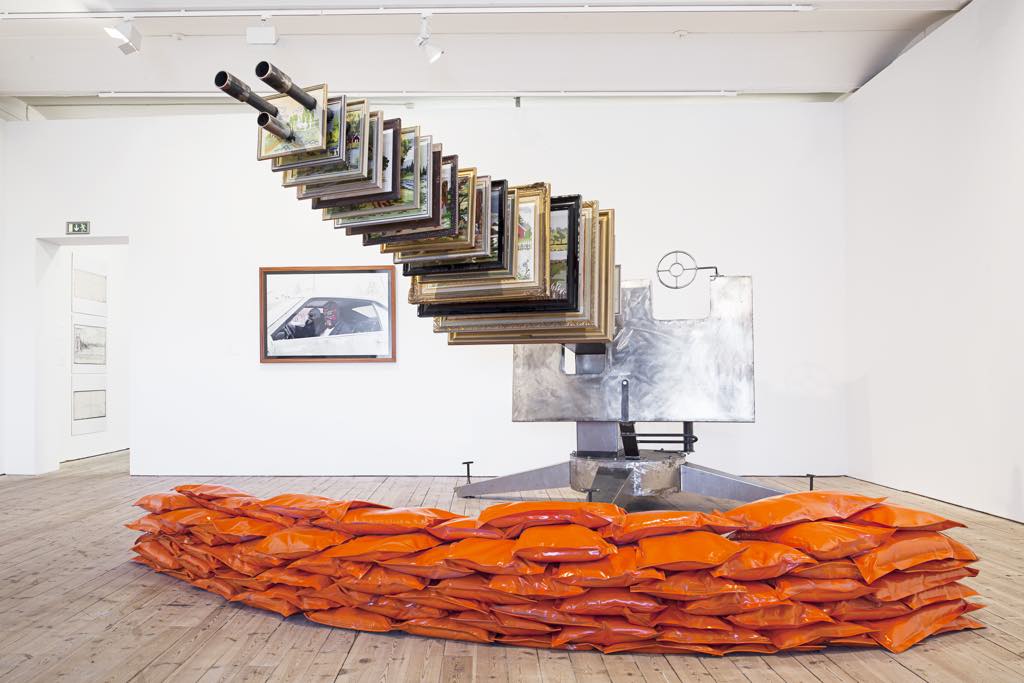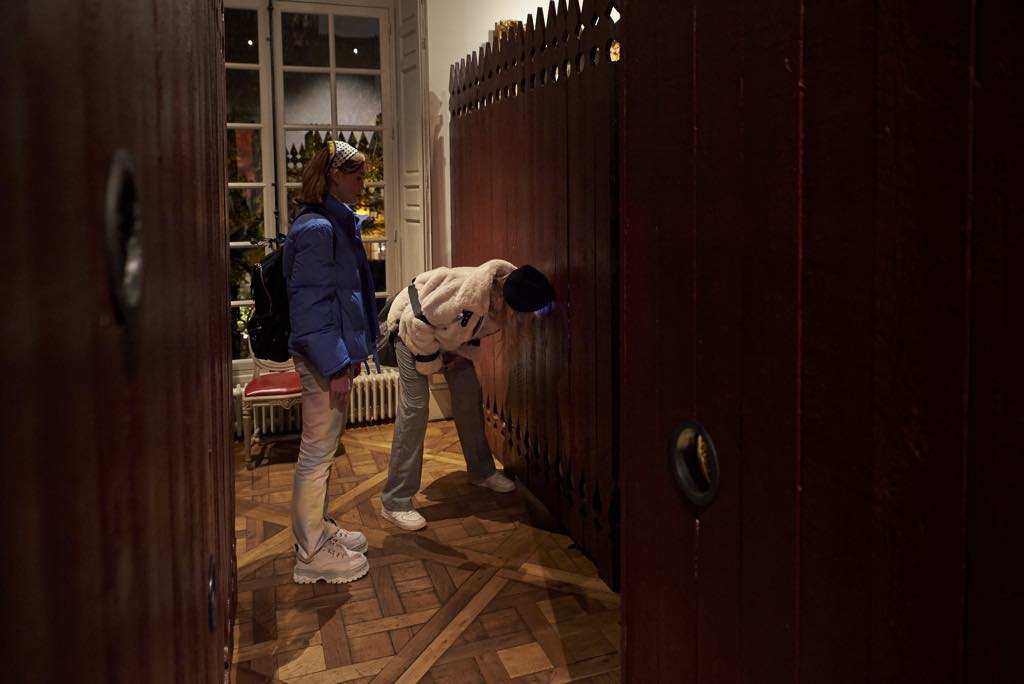
There are only a few days left to see “National Therapy by Peter Johansson” at the Institut Suédois. Dark yet very funny, the show, like all of Johansson’s work, casts a bemused eye on traditional Swedish symbols and stars the artist himself – often stark naked in all his pudginess – as the ultimate Swedish doofus (his word), whether he is baring his bottom in traditional Swedish dress or sporting the pigtails of Pippi Longstocking.
Johansson‘s work may look silly at first glance, but it is both profoundly political and profoundly personal. He grew up in the province of Dalarna, a bastion of Swedish tradition and right-wing extremism, a place where Nazism has been at home since the 1930s. Johansson seems to be liberating the national symbols from the control of the right and making them available to all.
Nationalism, his bête noire, is mocked mercilessly, in the form of kitschy Swedish clichés, ranging from the cutesy bright-red Dala horse – a toy that has become a national symbol – to the popular falukorv (falu sausages). “It all both fascinates and repulses me,” the artist has said, “but it’s not always easy to distinguish one from the other.”

The sausages are everywhere – big, fat, angry-red and very phallic. They pump away in rather frightening installations, pop out of holes in a wall and multiply on the wallpaper decorating the stairway to the upper floor of the exhibition. They are put to various non-traditional uses in the photos and videos, serving variously as bracelets or a hat.
The exhibition’s title says it all: he puts his country on the psychoanalyst‘s couch, where it can spill out its dreams and nightmares, which he interprets (not very kindly).
One thing is certain: the “national therapy“ Johansson is conducting in this exhibition is also the personal therapy of a man from a highly dysfunctional family who was sexually abused and bullied during his childhood. Hence the dark undercurrents that underlie the guffaw-inducing works in the show.

Johansson invests himself fully in his work, not only by posing in often-embarrassing positions and situations for photos and videos but also physically, by building large, complex sculptures and installations like the canon whose barrels pierce a series of folksy embroidered landscapes. Both can be found on the lower level of the show, where the walls are covered with large, colorful photos of Johansson disguised, à la Cindy Sherman, as a military man, the famed Swedish artist Anders Zorn, a worker in a sausage factory or simply as a sausage in a roll.

Upstairs, in a room filled with wooden partitions, the visitor has to become a voyeur and contort into uncomfortable positions to peer through peepholes to see selected details of works from Sweden’s Nationalmuseum or more works by Johansson.

A line in the catalog essay by critic Ulrika Knutson sums up Johansson’s work nicely: “While Anders Zorn and Carl Larsson went all out to construct the Swedish national ideal, Peter Johansson goes all out to demolish it.” Let’s hope that his work also helps him to demolish his personal demons.
Note: Peter Johansson will be interviewed by art historian Morgan Labar at the Institut Suédois at 5pm on February 29, 2020. Sign up on-site at 3:45pm. The exhibition’s curator, Marion Alluchon, will give a guided tour of the exhibition at 4pm (sign up at 3pm). Click here for details.
Favorite